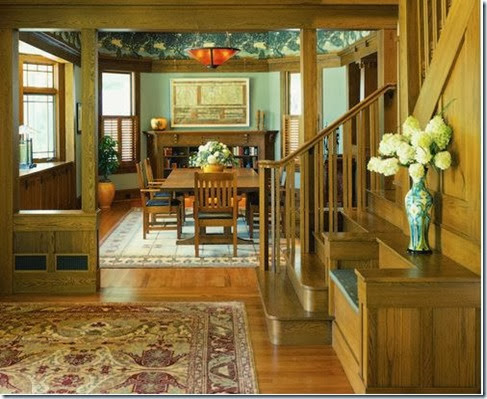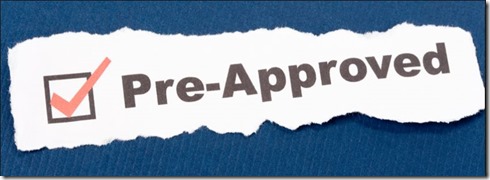by Alane Jewel
There’s so much to love about the Craftsman-style home. The handcrafted stone and woodwork perfectly combined with other natural elements. The large front porches supported with beautiful columns and covered by low-pitched, often gabled roofs and impressive overhanging eves. The attention to detail combined with the feeling of a quintessential, cozy bungalow. The unique beauty of these homes is carried throughout the interior as well, proudly displaying the workmanship involved. 
Craftsman Dining Room by Silver Spring Architects & Designers Gardner Mohr Architects LLC
Traditional Architectural Features & Color Palettes
The colors seen in Craftsman-style homes tend to complement the natural surroundings of their locale. Warm, earthy tones are quite popular for base colors, especially shades of beige, brown or green. Accent colors in red, orange and gold are often added to warm up a living space, and cooler colors such as grey or blue may be added to rooms where an abundance of natural light filters through. Colors are carefully chosen to coincide with natural elements while creating balance and harmony in the home.
Natural design elements including stone and wood are proudly exhibited throughout the home as well. Open floor plans effortlessly show off the rich, exposed wood beams, rafters and columns that are reminiscent of the arts and crafts home. Beautifully finished wood floors, trim, molding and wall paneling are typical, as are built-in features such as bookshelves, cabinetry or window seating. In the modern Craftsman home, woodwork may be stained or painted.
Flooring
Natural elements are most prominent when it comes to flooring. Beautifully stained wood floors enhance the craftsmanship of the other wood details in the home. Natural stone can also be an option as well as a variety of tile selections, such as terra cotta. Mosaic tiles are common but seen more in smaller spaces, such as entries or as an accent detail in traditional fireplace design or even countertops and bathrooms.
Windows and Lighting
There is often ample natural light in the traditional Craftsman home due to many large windows. It’s not uncommon to see these windows left undressed. However, simple drapery ensembles such as panels or sheers comprised of natural fibers can be used. Basic valences are also popular and still showcase the craftsmanship of the window design.
Stained glass has been beautifully incorporated into many traditional Craftsman homes in windows as well as wood accent pieces, such as built-in cabinets. When choosing light fixtures, consider stained glass as an option for both table lamps as well as hanging fixtures. They add amazing warmth to a space and are very complementary to the rich wood features prevalent in these homes.
Furnishings and Décor
Remember to consider natural materials when choosing interior décor to coincide with the arts and crafts philosophy. Typical craftsman furniture has defined, straight lines and is often made of wood adorned with natural fibers. Colored glass accents such as end tables are also commonly seen and further enhance the organic character of the home.
As a whole, décor in a Craftsman home should remain simple in order to not detract from the intricate workmanship already incorporated into the home. Standout pieces of pottery or vases make great accents, and large pieces of wall art including mirrors, framed art or canvasses are fantastic in moderation.
As you furnish your Craftsman-style home, remember that you are enhancing a handcrafted work of art to create your own one-of-a-kind, cozy bungalow.






 In colder climates, homebuilders generally enclose water pipes inside the house’s insulation to protect them from extreme cold. Unfortunately, that’s not always enough. If temperatures drop low enough or a problem exists that allows cold air to reach the pipes, it can lead to a burst pipe. Cracks, holes, gaps or inadequate insulation can still lead to frozen pipes.
In colder climates, homebuilders generally enclose water pipes inside the house’s insulation to protect them from extreme cold. Unfortunately, that’s not always enough. If temperatures drop low enough or a problem exists that allows cold air to reach the pipes, it can lead to a burst pipe. Cracks, holes, gaps or inadequate insulation can still lead to frozen pipes.






























 This also means that key bureaucracies in the IRS, Department of Housing and Urban Development, and the bodies that regulate Fannie Mae and Freddie Mac will have to take some involuntary time off.
This also means that key bureaucracies in the IRS, Department of Housing and Urban Development, and the bodies that regulate Fannie Mae and Freddie Mac will have to take some involuntary time off.



